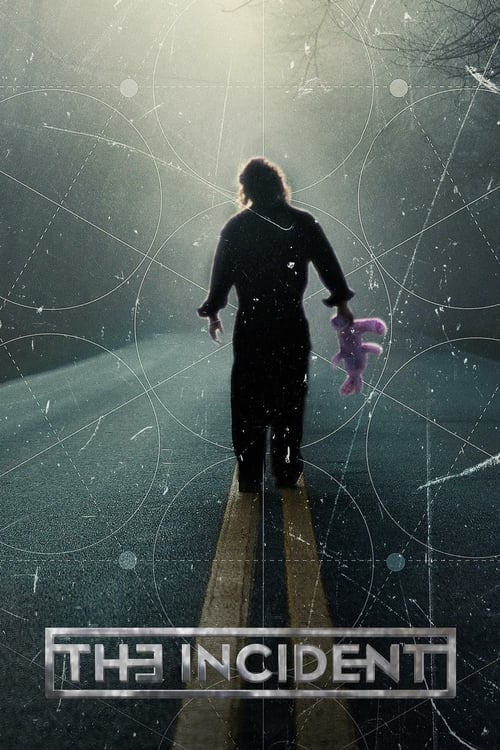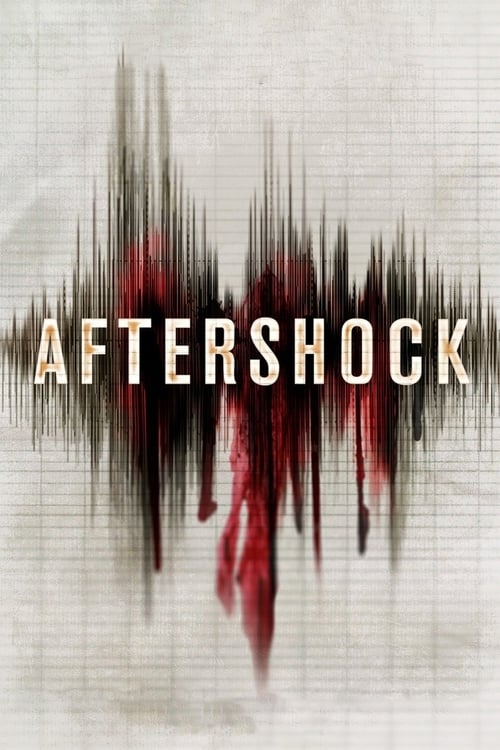
Ask Your Own Question
What is the plot?
"Terminal Phase" (2011) is a post-apocalyptic science fiction film set in a militarized world devastated by a mysterious infection that transforms humans into savage beasts. The story follows a young boy named Eli, who embarks on a harrowing journey to find his mother amidst the chaos and destruction.
The film opens in a bleak, desolate landscape scarred by war and disease. Eli lives with a small group of survivors in an underground bunker near what was once a thriving city. The infection has spread rapidly, turning most of the population into violent, animalistic creatures. The survivors are constantly on edge, fortified against attacks and struggling with dwindling supplies.
Eli's mother, Sarah, was separated from him during a brutal raid by infected hordes several months earlier. Despite the dangers, Eli is determined to find her, believing she is still alive. Early on, Eli's resolve is tested when the group's leader, Marcus, warns him, "Out there, hope is the deadliest enemy." But Eli refuses to abandon his quest.
The narrative follows Eli as he ventures out into the ravaged world. His journey is punctuated by tense encounters with infected beasts and hostile human factions. One of the first major confrontations occurs when Eli is ambushed by a group of scavengers led by a ruthless man named Kane. Kane's gang enslaves survivors, including women and children, to exploit them for labor and barter. Eli narrowly escapes, but not before witnessing the brutal killing of a young girl by Kane's men, a moment that underscores the film's grim tone.
As Eli travels, he encounters a mysterious woman named Lena, who claims to have information about Sarah's whereabouts. Lena is guarded and enigmatic, but she agrees to guide Eli through the dangerous territory controlled by Kane's gang. Their uneasy alliance deepens as they face multiple threats, including infected creatures that display terrifying new mutations.
During their journey, Eli and Lena discover a hidden military facility where scientists are desperately trying to develop a cure for the infection. Here, Eli learns a devastating truth: the infection was the result of a failed bioweapon experiment, and the military has been covering up the extent of the outbreak. The lead scientist, Dr. Harris, reveals that Sarah was taken to this facility for experimental treatment but escaped during a violent breakout.
The tension escalates when Kane's gang attacks the facility, seeking to capture the survivors and the cure for their own gain. In a fierce battle, several key characters die: Marcus sacrifices himself to hold off the attackers, giving Eli and Lena time to flee; Dr. Harris is killed while trying to secure the research data; and Kane himself is fatally wounded in a confrontation with Eli, who uses a makeshift weapon to defend himself.
Eli and Lena continue their search, following clues that lead them to an abandoned hospital where Sarah was last seen. Inside, they find signs of a struggle and a recorded message from Sarah pleading for Eli to stay safe and keep fighting. This emotional moment fuels Eli's determination.
The climax occurs when Eli finally confronts Sarah in a ruined city square, now overrun by infected beasts. Sarah has been hiding with a small group of survivors, including her husband, who has succumbed to the infection and become one of the beasts. In a heart-wrenching scene, Sarah reveals that she has been trying to protect a child born after the outbreak, the last hope for humanity's future.
As infected creatures close in, Eli and Sarah fight side by side. Sarah is mortally wounded protecting Eli, and with her dying breath, she entrusts him with the child and the hope for a new beginning. Eli escapes the city, carrying the child through the desolate landscape as the sun rises, signaling a fragile hope amid the devastation.
The film ends on a somber yet hopeful note: Eli, now a symbol of resilience, walks toward an uncertain future, determined to honor his mother's sacrifice and the promise of life after the terminal phase of humanity's collapse.
This narrative encompasses all major deaths--Marcus, Dr. Harris, Kane, Sarah, and the infected husband--each caused by either human violence or the infection itself. Key plot revelations include the infection's origin as a bioweapon, the military's cover-up, and Sarah's role as protector of the last hope for humanity. The story's emotional core is Eli's unwavering determination, culminating in the final confrontation and the passing of the torch to a new generation.
What is the ending?
In the ending of "Terminal Phase," the protagonist, a man named Jack, confronts the consequences of his actions as he faces a life-altering decision. The film culminates in a tense standoff that forces Jack to reckon with his past and the relationships he has strained. Ultimately, he makes a choice that leads to a tragic outcome, impacting not only his life but also the lives of those around him.
As the final act unfolds, Jack finds himself in a dimly lit room, the atmosphere thick with tension. He is alone, grappling with the weight of his decisions. Flashbacks of his past choices flicker through his mind, revealing the emotional turmoil he has endured. The camera captures the sweat on his brow and the tremor in his hands, emphasizing his internal struggle.
Suddenly, the door swings open, and his estranged friend, Mark, enters. Their eyes lock, and the air is charged with unspoken words. Mark's face is a mixture of anger and disappointment, reflecting the years of friendship that have been marred by Jack's reckless behavior. Jack's heart races as he realizes that this confrontation is inevitable.
The two men engage in a heated argument, their voices rising as they exchange accusations. Jack's desperation is palpable; he pleads for understanding, revealing the pain that has driven him to his current state. Mark, however, is resolute, unwilling to forgive the betrayals that have shattered their bond. The emotional stakes are high, and the tension escalates as they both grapple with their feelings of betrayal and loss.
In a moment of vulnerability, Jack reveals a secret that he has kept hidden, a truth that could change everything. The revelation hangs in the air, and for a brief moment, it seems as though reconciliation might be possible. However, the weight of their shared history proves too heavy to bear. Mark's expression shifts from anger to sorrow, and he turns away, unable to face the reality of their fractured friendship.
As the confrontation reaches its climax, Jack makes a fateful decision. He chooses to take a drastic step, one that he believes will finally free him from the pain of his past. The camera captures the moment in slow motion, emphasizing the gravity of his choice. Mark watches in horror, realizing too late the implications of Jack's actions.
The film concludes with a haunting silence, the aftermath of Jack's decision echoing in the empty room. Mark stands frozen, grappling with the loss of his friend and the irrevocable change that has taken place. The screen fades to black, leaving the audience to ponder the consequences of choices made in desperation and the fragility of human connections.
In the end, Jack's fate is sealed by his own hand, a tragic culmination of his internal struggles and the relationships he has neglected. Mark is left to navigate the void left by Jack's absence, a poignant reminder of the cost of unresolved conflict and the importance of forgiveness. The film closes on a somber note, underscoring the themes of loss, regret, and the enduring impact of our choices on those we care about.
Is there a post-credit scene?
In the movie "Terminal Phase," there is no post-credit scene. The film concludes its narrative without any additional scenes or content after the credits roll. The story wraps up with a focus on the main characters and their journeys, leaving the audience with a sense of closure regarding the events that have unfolded throughout the film.
What role does the setting play in the character's emotional journey?
The setting, often depicted as a stark contrast between the protagonist's hospital room and their memories of a vibrant past, symbolizes the character's internal struggle. The physical spaces evoke feelings of isolation and nostalgia, enhancing the emotional weight of their journey.
What are the key moments that lead to the protagonist's self-discovery?
Key moments include heartfelt conversations with family, flashbacks to pivotal life events, and moments of solitude that force the protagonist to confront their regrets. These scenes are rich in emotional detail, illustrating the character's transformation from denial to acceptance.
How does the protagonist's relationship with their family evolve throughout the film?
Initially strained due to past grievances, the protagonist's relationship with their family deepens as they face their impending death. Key scenes depict moments of vulnerability and reconciliation, showcasing the emotional turmoil and the desire for forgiveness.
What is the significance of the character's terminal illness in the story?
The terminal illness serves as a catalyst for the protagonist's journey, forcing them to confront their past decisions and relationships. It heightens the emotional stakes, as the character grapples with their mortality and seeks closure with loved ones.
How do the supporting characters influence the protagonist's decisions?
Supporting characters, such as friends and family members, serve as mirrors to the protagonist's fears and desires. Their interactions often challenge the protagonist's worldview, prompting critical self-reflection and ultimately guiding them toward acceptance and resolution.
Is this family friendly?
"Terminal Phase," produced in 2011, is not considered family-friendly. The film contains several potentially objectionable or upsetting scenes that may be distressing for children or sensitive viewers.
-
Intense Emotional Themes: The film explores heavy themes such as illness, death, and existential dread, which may be difficult for younger audiences to process.
-
Graphic Imagery: There are scenes that depict medical procedures and the physical deterioration of characters, which can be unsettling.
-
Violence: The film includes moments of violence that may be shocking or disturbing, contributing to a tense atmosphere.
-
Dark Atmosphere: The overall tone of the film is somber and bleak, which may evoke feelings of sadness or anxiety.
-
Mature Language: There are instances of strong language that may not be suitable for younger viewers.
These elements combine to create a narrative that is more appropriate for mature audiences, as it delves into complex and often distressing subject matter.











![[REC]⁴ Apocalypse (2014) poster](https://image.tmdb.org/t/p/w500/nlSSZNESHkY1iPzYnpcRvYUr7Mz.jpg)














